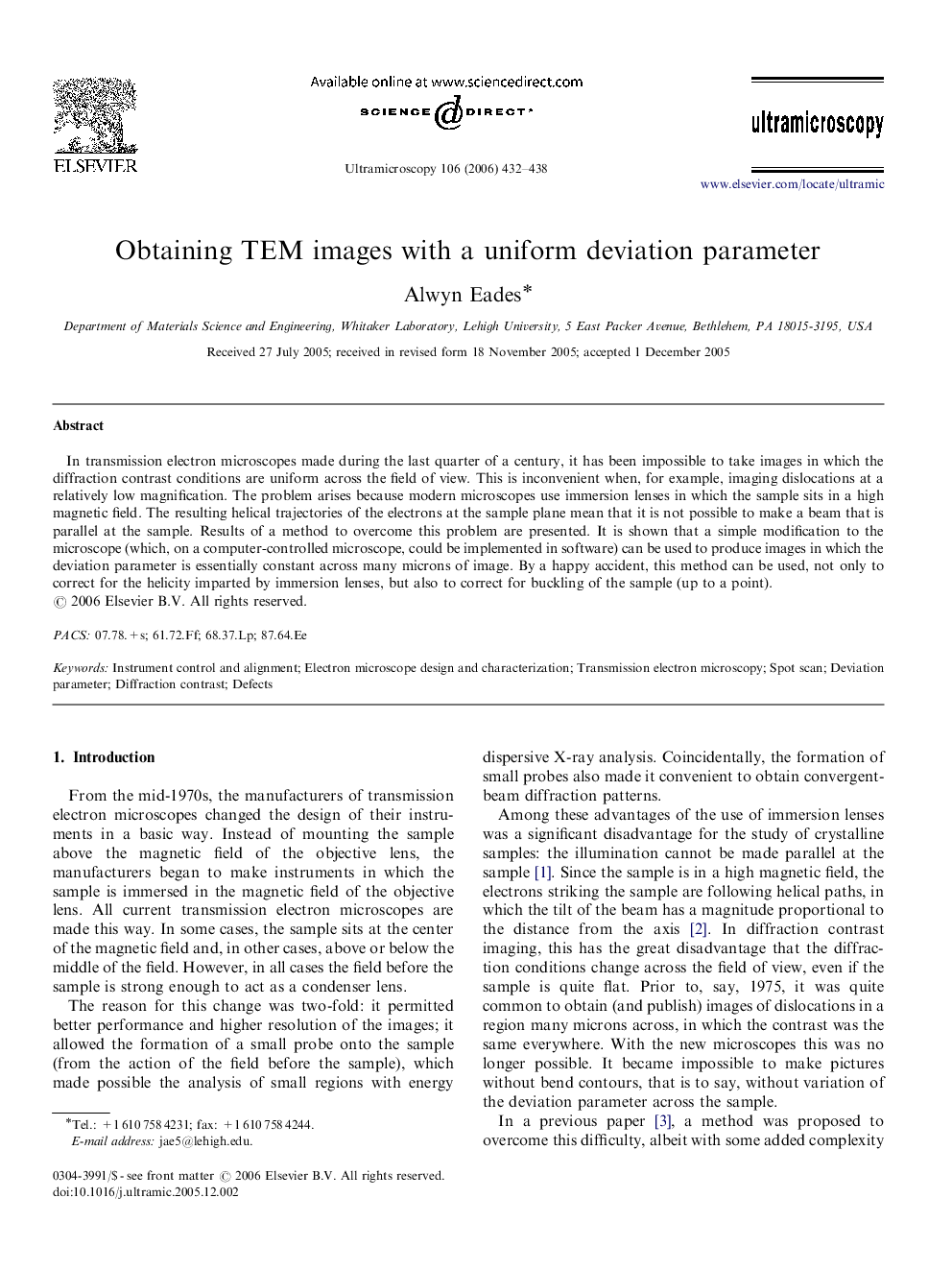| Article ID | Journal | Published Year | Pages | File Type |
|---|---|---|---|---|
| 1678736 | Ultramicroscopy | 2006 | 7 Pages |
In transmission electron microscopes made during the last quarter of a century, it has been impossible to take images in which the diffraction contrast conditions are uniform across the field of view. This is inconvenient when, for example, imaging dislocations at a relatively low magnification. The problem arises because modern microscopes use immersion lenses in which the sample sits in a high magnetic field. The resulting helical trajectories of the electrons at the sample plane mean that it is not possible to make a beam that is parallel at the sample. Results of a method to overcome this problem are presented. It is shown that a simple modification to the microscope (which, on a computer-controlled microscope, could be implemented in software) can be used to produce images in which the deviation parameter is essentially constant across many microns of image. By a happy accident, this method can be used, not only to correct for the helicity imparted by immersion lenses, but also to correct for buckling of the sample (up to a point).
